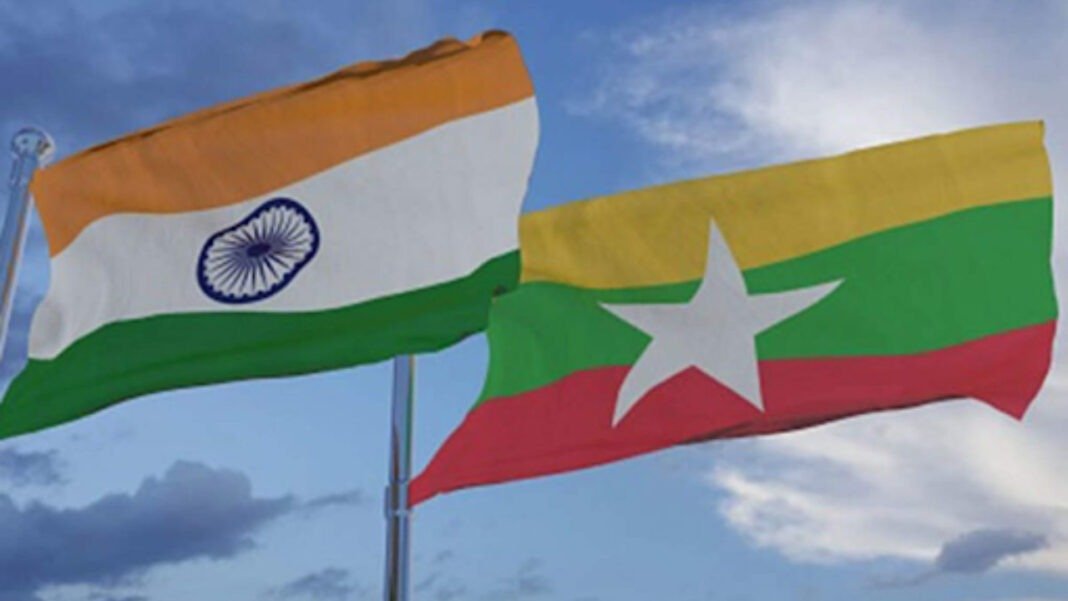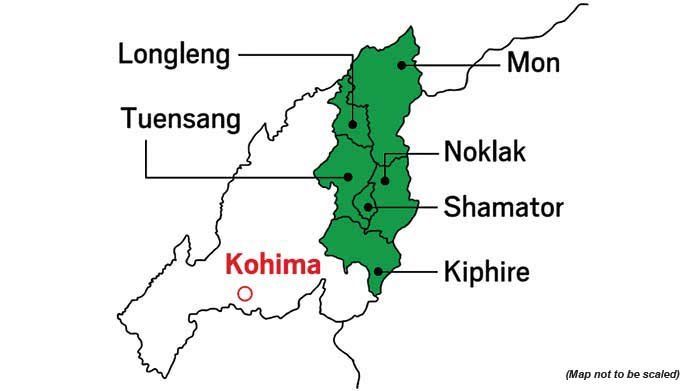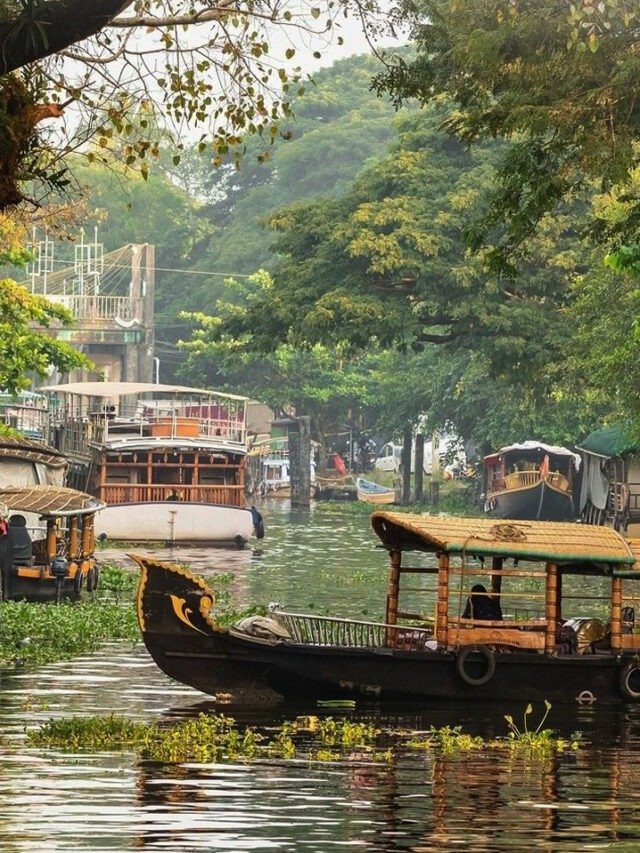By: Dr. Aniruddha Babar
In India’s embrace, Myanmar’s hand is held,
A partnership strong, their stories unfold.
Frontier Naga Territory, bound by fate,
With peace and progress, its future they create.
Through trade, culture, and shared endeavors,
Together they shape a land that forever thrives.
In a world where interconnectedness and collaboration are increasingly vital, the positive engagement between nations holds the potential to shape the destiny of regions and communities. This article delves into the significance of India’s positive engagement with Myanmar and its implications for the upcoming Frontier Naga Territory. By examining various dimensions such as trade, security, cultural exchanges, capacity building, and peace talks, the article aims to shed light on the transformative impact that collaborative efforts can have on the socio-economic development and stability of the region. Rooted in the shared history, culture, and aspirations of the Naga people on both sides of the border, this article explores how India’s positive engagement with Myanmar can pave the way for a brighter future, fostering peace, prosperity, and a sense of unity in the Frontier Naga Territory.
India’s positive engagement with Myanmar has the potential to greatly impact the upcoming Frontier Naga Territory, both in terms of regional stability and the socio-economic development of the Eastern Naga people. The relationship between India and Myanmar extends beyond geopolitical considerations and encompasses historical, cultural, and strategic dimensions. By fostering stronger ties and enhancing cooperation with Myanmar, India can pave the way for a more prosperous and peaceful future for the Frontier Naga Territory.
The upcoming Frontier Naga Territory, situated on the border between India and Myanmar, holds immense strategic importance. Our Naga people, who inhabit both sides of the border, share cultural, historical, and ethnic ties that transcend national boundaries. As India seeks to address the challenges in the land and bring lasting peace and constructive development to the region, positive engagement with Myanmar becomes crucial.
One significant aspect of India’s engagement with Myanmar is the promotion of cross-border trade and connectivity. Strengthening trade links between India’s Northeast region and Myanmar can provide a major boost to the economic development of the Frontier Naga Territory. Enhanced infrastructure, such as road and rail networks, can facilitate trade and people-to-people exchanges, opening up new avenues for economic growth and prosperity.
Furthermore, India’s continuous positive engagements with Myanmar can help address security concerns in the Frontier Naga Territory. Myanmar shares borders with several Indian states in the Northeast, including Nagaland, Manipur, and Arunachal Pradesh. Collaborative efforts to combat cross-border smuggling, human trafficking, drug peddling and other security challenges can contribute to stability in the region. Close cooperation between Indian security forces, Frontier Village Guards Forces and Myanmar’s security apparatus can help prevent the spillover of violence as well as other cross-border threats and promote a secure and safe environment in the Frontier Naga Territory to progress and prosper.
Cultural and people-to-people exchanges play a crucial role in building bridges between communities and fostering mutual understanding. India’s positive engagement with Myanmar can facilitate official cultural exchanges between the Naga people on both sides of the border. Cultural festivals, exchange programs, and interactions among artists, intellectuals, students, merchants, social activists, politicians and youth can strengthen the bonds between the Naga communities and contribute to a sense of shared identity and heritage.
In addition to these aspects, India’s positive engagement with Myanmar can provide opportunities for capacity building and skill development for our Eastern Naga people and also the Naga people from the Myanmar side. Scholarships, vocational training programs, and educational exchanges can empower the Naga youth and equip them with the necessary skills to contribute to the development of the Frontier Naga Territory. Collaborative initiatives in the fields of education, healthcare, and agriculture can also improve the quality of life and well-being of the Naga people.
India’s positive engagement with Myanmar has taken into account the perspectives and aspirations of the Naga people themselves. Consultations with Naga civil society organizations, community leaders, and various stakeholders are essential to ensure that the engagement process is inclusive and addresses the specific needs and concerns of the Naga community- FRONTIER NAGA TERRITORY will be a great and stronger platform and a robust channel to achieve this goal.
By actively involving our Eastern Naga people in the dialogue and decision-making processes through Frontier Naga Territory, India can foster a sense of ownership and create a conducive environment for economic-political justice, sustainable development, peace, progress and prosperity in the most neglected region in India which has been kept backward-trapped in manufactured poverty by the state machineries dormantly stationed in the Nagaland’s capital city of Kohima.
In conclusion, the positive engagement between India and Myanmar holds tremendous promise for the upcoming Frontier Naga Territory. Through strengthened trade and connectivity, enhanced security cooperation, cultural exchanges, capacity building initiatives, and inclusive dialogue with our Eastern Naga community, India can create a foundation for peace, development, and prosperity in the region. By forging closer ties with Myanmar, India can unlock new avenues for economic growth and create opportunities for the Naga people to thrive. The shared history, cultural affinity, and strategic importance of the Frontier Naga Territory make this engagement all the more significant.
India’s continuous positive engagement with Myanmar is not merely a strategic move but a reflection of the commitment to promoting regional integration, stability, and the well-being of the Naga community in the region. The potential for cross-border trade, infrastructure development, and people-to-people exchanges can contribute to the socio-economic upliftment of the Naga people. Moreover, collaborative efforts in addressing security challenges and advancing peace talks can bring about lasting stability in the Frontier Naga Territory.
By approaching this engagement with a spirit of inclusivity, respect, and shared vision, India can build a future where the Frontier Naga Territory becomes a beacon of hope, harmony, and progress. Through sustained commitment and a genuine desire for positive change, India’s engagement with Myanmar will serve as a catalyst for transformation, bringing about a new era of peace, development, and empowerment for the Naga people. Together, India and Myanmar through constructive collaboration can shape a brighter future for the Frontier Naga Territory, leaving a lasting legacy of collaboration, understanding, and prosperity. (The author is an academician in the Department of Political Science, Tetso College, Nagaland)












